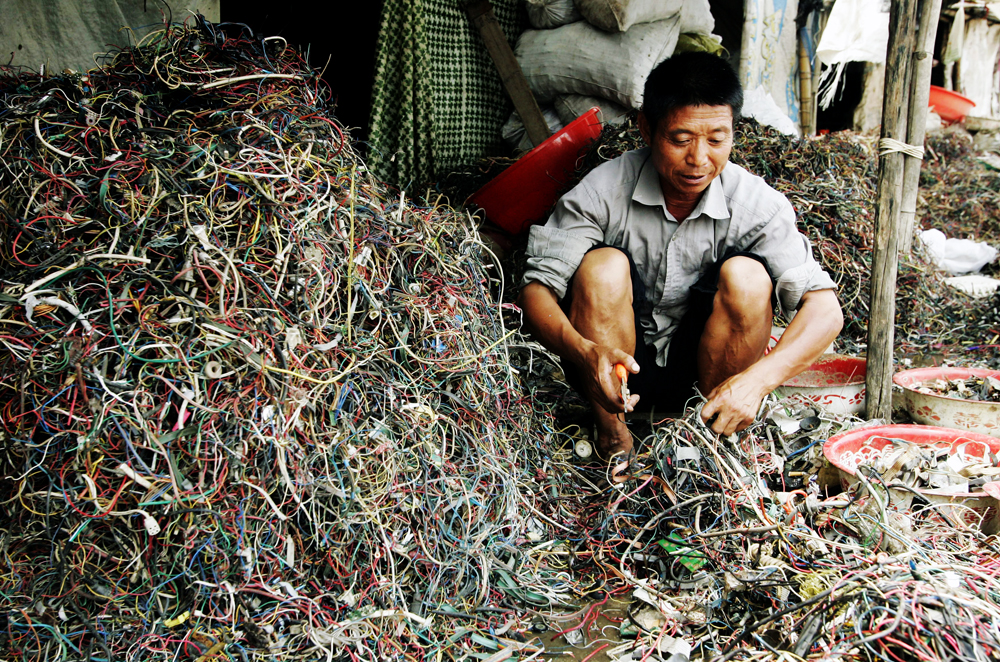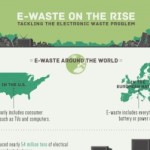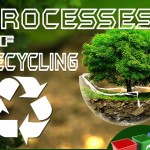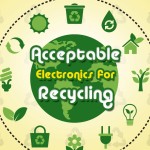E-waste refers to all forms of electrical and electronic equipment (EEE) going into landfills as waste. While e-waste is a general term for various categories of the same it covers all the major elements inclusive of computers, TVs, mobile phones, electronic toys, white goods (washing machines, fridges, dryers, etc), kettles, toasters, stereo systems and the like. As such, it can be understood to cover any electronic item that either ran of circuitry or with batteries.
The amount of e-waste has been growing exponentially every year. This coincides with our modern lifestyle inclining more towards technology and technology derived goods and the rise of information and communication needs. To put some glaring statistics into focus:
- 2% of America’s landfill constitutes toxic e-waste
- 80-85% of electronic items are finally discarded to contribute to landfills
- Our world generates more than 50 million metric tons of e-waste every year
- Only 12.5% of e-waste gets recycled
- E-waste generated in America every year constitutes more than $60 million in gold and silver
The Good thing
Every 1 million of recycled e-waste constitute 33 lbs of palladium, 75 lbs of gold, 772 lbs of silver and 35,274 lbs of copper and several other precious elements. Recycling e-waste can bring back considerable amount of resource and cost advantages associated with reduced mining, processing and production. One would be surprised to note that a mobile phone contains more than 50 elements including special metals like antimony, indium and cobalt. The lithium ion battery used in most smart gadgets today can contain over 3.5 grams of cobalt.
The Bad thing
While e-waste can help recycle and reduce mining, as already said, the world is able to recycle on about 25% of it. These precious and rare metals can simultaneously be highly toxic and added to the earth as landfill can give rise to fatal damages. Toxicity of the soil is extended to toxicity of our rivers and even the air. This gives rise to insurmountable pollution. One should understand that e-waste is completely non-biodegradable and finally enters the human body after passing through our food chain.
With the current rate of EEE disposal, it is expected that the volume of e-waste will reach 93.5 million tons by the year 2016. Over 41.5 million tons was generated in 2011 and it has risen to 70 million tons in only 3 years. With this rate of increase, we are soon going to have large stretches of inhabitable land and polluted/unsuitable living environment.
The Ugly thing
When we say that e-waste has been growing each year and making our environment polluted, it only means that we are turning our planet into an inhabitable one. This is a problem of global concern and gives rise to a complicated chain of undesirable events. E-waste has been proved to have severe impact on thyroid functioning, adverse neonatal conditions, temperamental changes, cancer, decreased functioning of lung, tissue damage and more. E-waste also contributes to growing abortions, premature births, still births and decreased birth length and birth weight. People exposed to e-waste are also expected to have DNA damage, the very basic of life and behavior.
Today, the whole world is fighting to reduce e-waste. The more developed countries are in more risk of growing e-waste and a solution needs to be arrived at soon.















